Archives
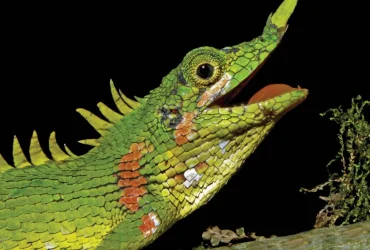 v9i1.223
v9i1.223ISSN: 1800-427X (printed)
eISSN: 1800-427X (online)
DOI:10.47605/tapro.v9i1.223
Submitted date: 15 March 2020
Accepted date: 05 May 2020
Published date: 21 May 2020
Pp. 71–82, pls. 25–29.
A NEW DIMINUTIVE DAY GECKO SPECIES OF THE GENUS Cnemaspis STRAUCH, 1887 (REPTILIA : GEKKONIDAE) FROM PILIKUTTUWA, NEAR THE CAPITAL OF SRI LANKA
A.A. Thasun Amarasinghe* & Suranjan Karunarathna
*Corresponding author. E-mail: thasun@rccc.ui.ac.id
Abstract
We investigated diminutive day geckos of the genus Cnemaspis in Sri Lanka, and based on morphological evidence, a new species belonging to the C. podihuna complex is described herein. The new species occurs in lowland wetzone (alt. 50 m a.s.l.) forests and adjacent human habitations which have a dense tree cover in Gampaha District, near Colombo, the capital of Sri Lanka. We also provide a key for this and previously recognized species from Sri Lanka, based on collected material and literature.
Key words : Cnemaspis podihuna, Cnemaspis tropidogaster, Colombo, taxonomy, urban biodiversity
Section Editor: Aaron Bauer
LSID:urn:lsid:zoobank.org
eISSN: 1800-427X (online)
DOI:10.47605/tapro.v9i1.223
Submitted date: 15 March 2020
Accepted date: 05 May 2020
Published date: 21 May 2020
Pp. 71–82, pls. 25–29.
A NEW DIMINUTIVE DAY GECKO SPECIES OF THE GENUS Cnemaspis STRAUCH, 1887 (REPTILIA : GEKKONIDAE) FROM PILIKUTTUWA, NEAR THE CAPITAL OF SRI LANKA
A.A. Thasun Amarasinghe* & Suranjan Karunarathna
*Corresponding author. E-mail: thasun@rccc.ui.ac.id
Abstract
We investigated diminutive day geckos of the genus Cnemaspis in Sri Lanka, and based on morphological evidence, a new species belonging to the C. podihuna complex is described herein. The new species occurs in lowland wetzone (alt. 50 m a.s.l.) forests and adjacent human habitations which have a dense tree cover in Gampaha District, near Colombo, the capital of Sri Lanka. We also provide a key for this and previously recognized species from Sri Lanka, based on collected material and literature.
Key words : Cnemaspis podihuna, Cnemaspis tropidogaster, Colombo, taxonomy, urban biodiversity
Section Editor: Aaron Bauer
LSID:urn:lsid:zoobank.org
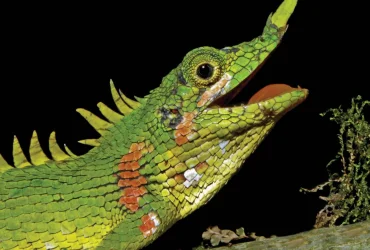 v9i1.222
v9i1.222ISSN: 1800-427X (printed)
eISSN: 1800-427X (online)
DOI:10.47605/tapro.v9i1.222
Submitted date: 01 December 2019
Accepted date: 30 April 2020
Published date: 21 May 2020
Pp. 59–70, pls. 22–24.
A NEW BENT-TOED GECKO SPECIES OF THE GENUS Cyrtodactylus GRAY, 1827 (SQUAMATA : GEKKONIDAE) FROM THE WEST BALI NATIONAL PARK, BALI, INDONESIA
A.A. Thasun Amarasinghe*, Awal Riyanto, Mumpuni & Lee L. Grismer
*Corresponding author. E-mail: thasun@rccc.ui.ac.id
Abstract
A new bent-toed gecko species of the genus Cyrtodactylus is described herein from West Bali National Park on the island of Bali, Indonesia. The Cyrtodactylus from Bali have been recognized as C. fumosus for nearly a century. However, recent detailed examination of the type material of C. fumosus has revealed that Balinese Cyrtodactylus represent at least one different species. A morphological examination of the new species and samples from different biogeographic regions revealed that the new species is similar to C. seribuatensis from Pulau Seribuat in West Malaysia. Morphologically, the new species can be distinguished from its congener by having 40–43 femoro-precloacal pores (vs 10–12 precloacal pores, 14–16 femoral pores), 40–48 ventral scales between ventrolateral folds (vs 28–39), 24–29 rows of dorsal tubercles (vs 27–35), and presence of tubercles on lateral skinfold (vs absent).
Key words : Cyrtodactylus fumosus, Sundaland, Taman Nasional Bali Barat, taxonomy
Section Editor: Aaron Bauer
LSID:urn:lsid:zoobank.org
eISSN: 1800-427X (online)
DOI:10.47605/tapro.v9i1.222
Submitted date: 01 December 2019
Accepted date: 30 April 2020
Published date: 21 May 2020
Pp. 59–70, pls. 22–24.
A NEW BENT-TOED GECKO SPECIES OF THE GENUS Cyrtodactylus GRAY, 1827 (SQUAMATA : GEKKONIDAE) FROM THE WEST BALI NATIONAL PARK, BALI, INDONESIA
A.A. Thasun Amarasinghe*, Awal Riyanto, Mumpuni & Lee L. Grismer
*Corresponding author. E-mail: thasun@rccc.ui.ac.id
Abstract
A new bent-toed gecko species of the genus Cyrtodactylus is described herein from West Bali National Park on the island of Bali, Indonesia. The Cyrtodactylus from Bali have been recognized as C. fumosus for nearly a century. However, recent detailed examination of the type material of C. fumosus has revealed that Balinese Cyrtodactylus represent at least one different species. A morphological examination of the new species and samples from different biogeographic regions revealed that the new species is similar to C. seribuatensis from Pulau Seribuat in West Malaysia. Morphologically, the new species can be distinguished from its congener by having 40–43 femoro-precloacal pores (vs 10–12 precloacal pores, 14–16 femoral pores), 40–48 ventral scales between ventrolateral folds (vs 28–39), 24–29 rows of dorsal tubercles (vs 27–35), and presence of tubercles on lateral skinfold (vs absent).
Key words : Cyrtodactylus fumosus, Sundaland, Taman Nasional Bali Barat, taxonomy
Section Editor: Aaron Bauer
LSID:urn:lsid:zoobank.org
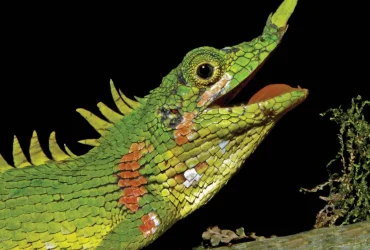 v9i1.221
v9i1.221ISSN: 1800-427X (printed)
eISSN: 1800-427X (online)
DOI:10.47605/tapro.v9i1.221
Submitted date: 05 April 2020
Accepted date: 30 April 2020
Published date: 21 May 2020
Pp. 50–58, pls. 19–21.
REDESCRIPTION OF Lycodon travancoricus (BEDDOME, 1870) (REPTILIA : COLUBRIDAE), AN INDIAN ENDEMIC SNAKE, WITH A REVIEW OF ITS GEOGRAPHIC RANGE
S.R. Ganesh, A.A. Thasun Amarasinghe & Gernot Vogel*
*Corresponding author. E-mail: gernot.vogel@t-online.de
Abstract
We redescribe the poorly-known peninsular India endemic colubrid snake Lycodon travancoricus based on its traceable syntype. We elaborate on the geographic range of the species and reveal its distribution in several disjunct hill ranges scattered across its range – the Western Ghats, the Eastern Ghats and the Central Indian Highlands. Discussions about a suggested relegation of its status as a subspecies of the widespread L. aulicus are revisited, in light of new knowledge on the species complex to which it belongs. Our perusal of extralimital records allocated to this species reveals frequent incorrect identification and provenance of specimens. Our results bolster the view that the existing diagnosis is sufficient to distinguish this species from regional congeners supporting its continued recognition as a valid species restricted to peninsular India.
Key words : distribution, Eastern Ghats, identification, Indian peninsula, syntype, Western Ghats
Section Editor: Ivan Ineich
LSID:urn:lsid:zoobank.org
eISSN: 1800-427X (online)
DOI:10.47605/tapro.v9i1.221
Submitted date: 05 April 2020
Accepted date: 30 April 2020
Published date: 21 May 2020
Pp. 50–58, pls. 19–21.
REDESCRIPTION OF Lycodon travancoricus (BEDDOME, 1870) (REPTILIA : COLUBRIDAE), AN INDIAN ENDEMIC SNAKE, WITH A REVIEW OF ITS GEOGRAPHIC RANGE
S.R. Ganesh, A.A. Thasun Amarasinghe & Gernot Vogel*
*Corresponding author. E-mail: gernot.vogel@t-online.de
Abstract
We redescribe the poorly-known peninsular India endemic colubrid snake Lycodon travancoricus based on its traceable syntype. We elaborate on the geographic range of the species and reveal its distribution in several disjunct hill ranges scattered across its range – the Western Ghats, the Eastern Ghats and the Central Indian Highlands. Discussions about a suggested relegation of its status as a subspecies of the widespread L. aulicus are revisited, in light of new knowledge on the species complex to which it belongs. Our perusal of extralimital records allocated to this species reveals frequent incorrect identification and provenance of specimens. Our results bolster the view that the existing diagnosis is sufficient to distinguish this species from regional congeners supporting its continued recognition as a valid species restricted to peninsular India.
Key words : distribution, Eastern Ghats, identification, Indian peninsula, syntype, Western Ghats
Section Editor: Ivan Ineich
LSID:urn:lsid:zoobank.org
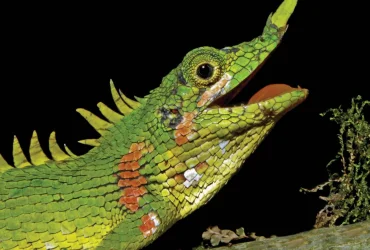 v9i1.220
v9i1.220ISSN: 1800-427X (printed)
eISSN: 1800-427X (online)
DOI:10.47605/tapro.v9i1.220
Submitted date: 01 December 2019
Accepted date: 11 March 2020
Published date: 21 May 2020
Pp. 39–49, pls. 15–18.
TAXONOMY AND DISTRIBUTION OF Liopeltis calamaria (GÜNTHER, 1858) (REPTILIA : COLUBRIDAE), INCLUDING REDESCRIPTION OF THE SYNTYPES
A.A. Thasun Amarasinghe*, Suranjan Karunarathna, Patrick D. Campbell, S.R. Ganesh & Gernot Vogel
*Corresponding author. E-mail: thasun@rccc.ui.ac.id
Abstract
Liopeltis calamaria, a rare non-venomous colubrid snake of South Asia, is redescribed. Its syntypes and all the available type specimens of its recognized synonyms are examined, including information about the respective populations found across India and Sri Lanka. Our literature compilation and mapping analyses reveal three distinct populations – (I) Sri Lankan (probably also present in some parts of South India as well), (II) Peninsular Indian, and (III) Himalayan / Nepalese, separated by the Palk Strait and the Indo-Gangetic plains respectively.
Key words : India, population variation, reed snake, sexual dimorphism, Sri Lanka, synonyms
Section Editor: Ivan Ineich
LSID:urn:lsid:zoobank.org
eISSN: 1800-427X (online)
DOI:10.47605/tapro.v9i1.220
Submitted date: 01 December 2019
Accepted date: 11 March 2020
Published date: 21 May 2020
Pp. 39–49, pls. 15–18.
TAXONOMY AND DISTRIBUTION OF Liopeltis calamaria (GÜNTHER, 1858) (REPTILIA : COLUBRIDAE), INCLUDING REDESCRIPTION OF THE SYNTYPES
A.A. Thasun Amarasinghe*, Suranjan Karunarathna, Patrick D. Campbell, S.R. Ganesh & Gernot Vogel
*Corresponding author. E-mail: thasun@rccc.ui.ac.id
Abstract
Liopeltis calamaria, a rare non-venomous colubrid snake of South Asia, is redescribed. Its syntypes and all the available type specimens of its recognized synonyms are examined, including information about the respective populations found across India and Sri Lanka. Our literature compilation and mapping analyses reveal three distinct populations – (I) Sri Lankan (probably also present in some parts of South India as well), (II) Peninsular Indian, and (III) Himalayan / Nepalese, separated by the Palk Strait and the Indo-Gangetic plains respectively.
Key words : India, population variation, reed snake, sexual dimorphism, Sri Lanka, synonyms
Section Editor: Ivan Ineich
LSID:urn:lsid:zoobank.org
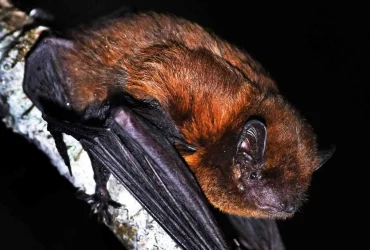 v9i2.227
v9i2.227ISSN: 1800-427X (printed)
eISSN: 1800-427X (online)
DOI:10.47605/tapro.v9i2.227
Published date: 28 November 2020
Pp. 133–135
EDITORIAL: Cladonotus bhaskari: a call for improving ethical standards in taxonomic journals
A.A.Thasun Amarasinghe
Co-editor-in-chief: Taprobanica, the journal of Asian Biodiversity
We are in a period of mass extinctions, when many species of animals, plants and other organisms are disappearing through direct or indirect human activities. Yet, the declining numbers of expert taxonomists represents a barrier to identifying, studying and protecting threatened species. This is especially true in developing countries such as Sri Lanka. How can we enjoy and protect something if we don‘t know it is out there to enjoy and protect? As urgent as the description of newly discovered species is, such descriptions must necessarily take place in the context not only of the International Code of Zoological Nomenclature (ICZN) but also a sound ethical framework including adherence to local laws. Even urgently needed taxonomic research cannot be justified if it breaches ethical guidelines or the laws of the countries in which the organisms of interest originate, as the following cases illustrate.
eISSN: 1800-427X (online)
DOI:10.47605/tapro.v9i2.227
Published date: 28 November 2020
Pp. 133–135
EDITORIAL: Cladonotus bhaskari: a call for improving ethical standards in taxonomic journals
A.A.Thasun Amarasinghe
Co-editor-in-chief: Taprobanica, the journal of Asian Biodiversity
We are in a period of mass extinctions, when many species of animals, plants and other organisms are disappearing through direct or indirect human activities. Yet, the declining numbers of expert taxonomists represents a barrier to identifying, studying and protecting threatened species. This is especially true in developing countries such as Sri Lanka. How can we enjoy and protect something if we don‘t know it is out there to enjoy and protect? As urgent as the description of newly discovered species is, such descriptions must necessarily take place in the context not only of the International Code of Zoological Nomenclature (ICZN) but also a sound ethical framework including adherence to local laws. Even urgently needed taxonomic research cannot be justified if it breaches ethical guidelines or the laws of the countries in which the organisms of interest originate, as the following cases illustrate.
Hubungi Kami
The ultimate aim of the journal is to provide an effective medium for communication of the latest and best scientific information.
Copyright © 2020 Taprobanica. All Rights Reserved
Jasa Pembuatan Website by IKT




